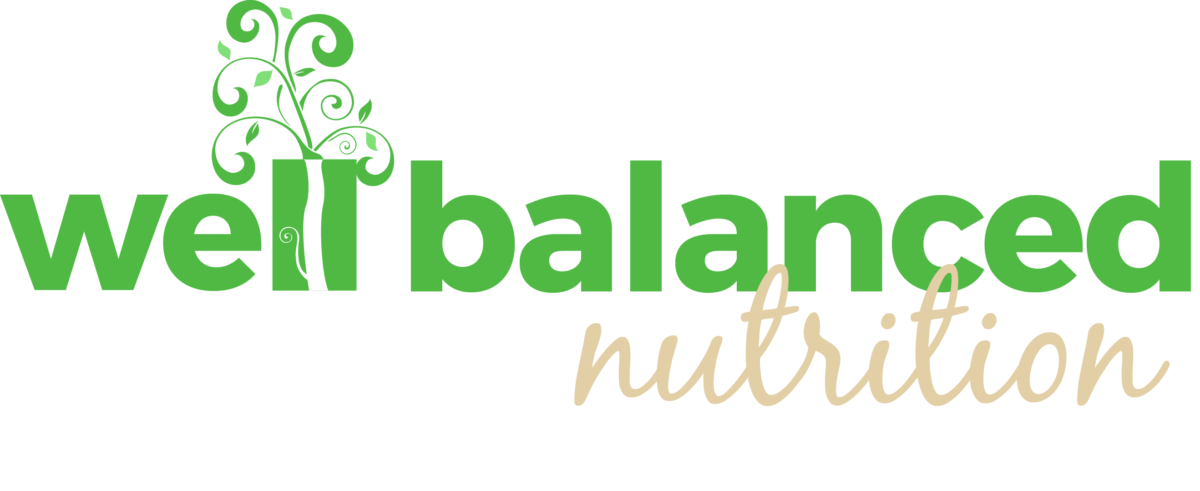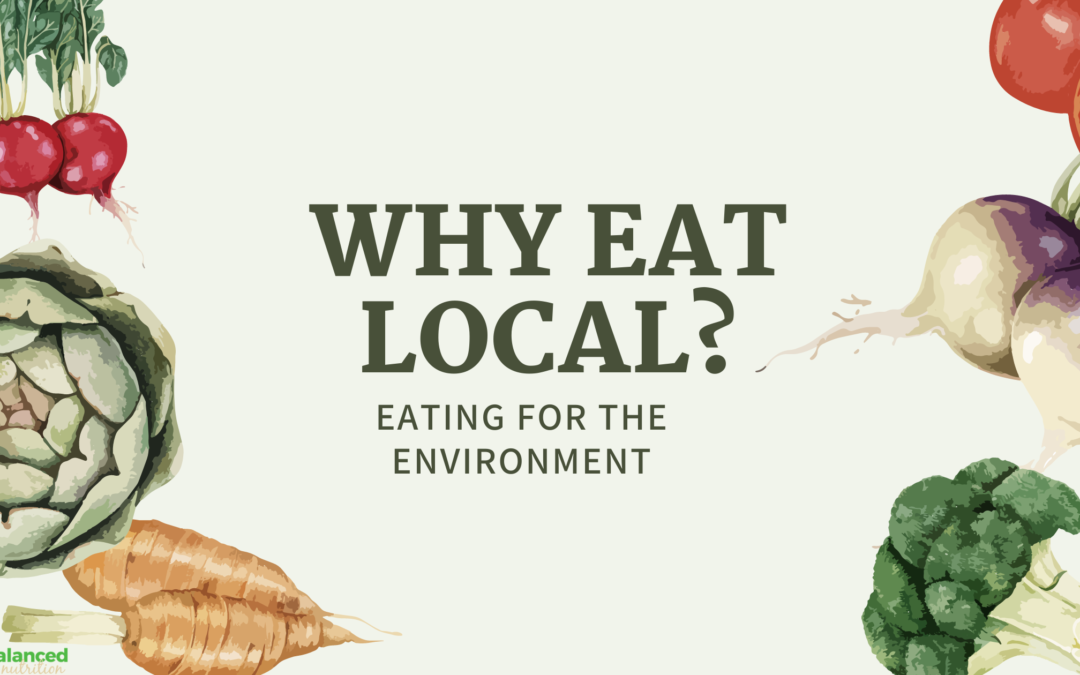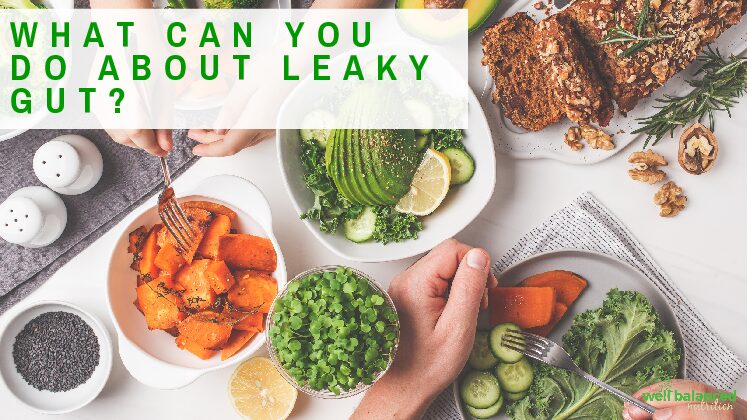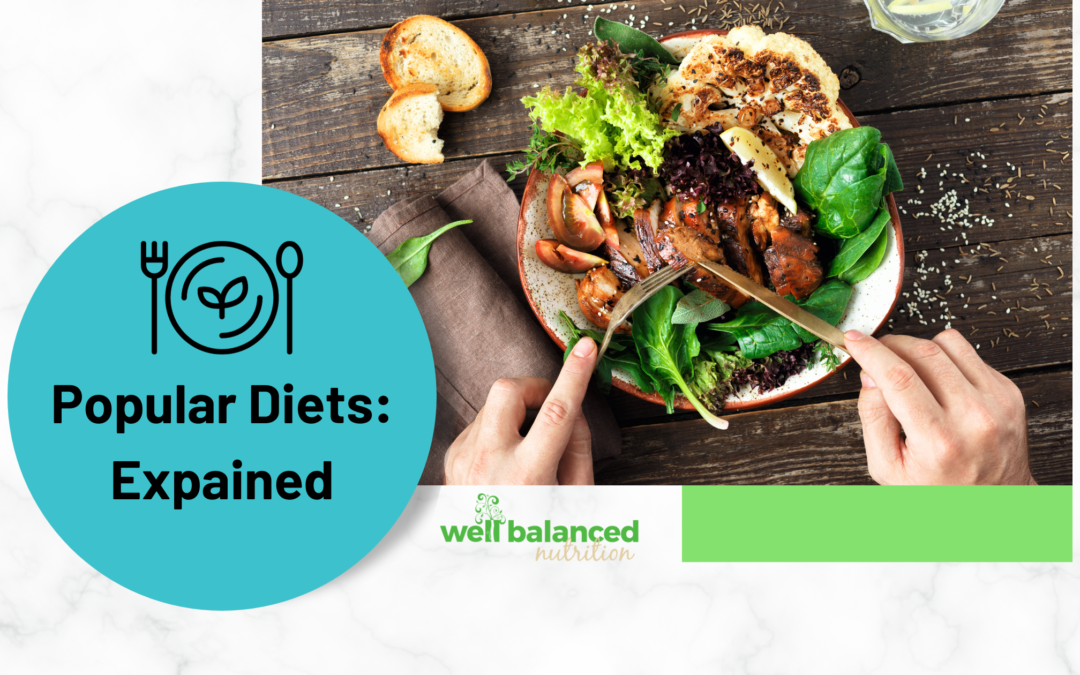
by Kristen Norton | Dec 21, 2023 | Nutrition Questions Answered
Are you curious about popular diets that everyone is buzzing about? You’ve probably heard of keto, paleo, intermittent fasting, veganism, and the Mediterranean diet. But what exactly are they, and how do they work? And most importantly, are they good for you and your goals? In this article, we will compare these five diets and tell you the pros and cons of each one. We will also give you some tips on how to pick the best diet for you and your lifestyle.
Keto: The Low-Carb, High-Fat Diet
The keto diet is a diet that limits your carbs and emphasizes the addition of more fats. The idea is to put your body into a state of ketosis, where your body burns fat instead of glucose (sugar) for energy. Reaching this state by following the keto diet may help you lose weight fast, as well as improve your blood sugar, inflammation, and brain function [1] [2]. But the keto diet also has some downsides, such as possible nutrient deficiencies, digestive issues, higher cholesterol levels, and a higher risk of kidney stones [1] [2] [3]. These downsides may make keto a risky choice for individuals with diabetes, kidney disease, liver disease, or pregnant or breastfeeding women.
It’s also important to mention that for many, sticking with this diet long-term is very difficult. It excludes several healthy foods and requires a lot of forethought to stick to such a low-carb diet. This could lead to “yo-yo dieting,” and we know that rapid weight loss fluctuations are associated with increased mortality.
There are several health conditions for which keto is absolutely contraindicated, such as Porphyria and genetic deficiencies like fatty acid beta-oxidation defects. [18] Other contexts haven’t had much, if any, keto research, and caution is warranted, such as with pregnancy and eating disorders.
Paleo: The Ancient Diet
The Paleo diet is a nutritional approach that mimics the dietary patterns of our ancestors during the Paleolithic era before modern farming practices. This diet promotes the consumption of whole foods like meat, fish, eggs, nuts, seeds, fruits, and vegetables and avoids grains, beans, and dairy while limiting refined sugars, processed foods, and oils. This way of eating can be very satiating due to the hunger-crushing properties of the foods you will be eating (protein, fiber, fats).
A paleo eating pattern may help you lose weight, lower your blood pressure and cholesterol, reduce inflammation, and prevent chronic diseases [4] [5]. In general, the paleo diet can be a good option for people with allergies or intolerances to certain foods. Despite limiting grains, beans and dairy, it can still be a very Well Balanced diet. However, it also has some drawbacks to be aware of. The paleo diet’s strict emphasis on whole foods can make it restrictive, expensive, difficult to follow in social situations, and lacking in some nutrients such as calcium and vitamin D [4] [5] [6].
Intermittent Fasting: The Time-Restricted Diet
Intermittent fasting is a diet that changes when you eat rather than what you eat. Individuals following this dietary plan alternate between periods of fasting and eating. There are different ways to do intermittent fasting, such as eating within an 8-hour window every day (16/8), eating normally for 5 days and cutting calories to 500-600 on 2 days (5:2), or fasting every other day (alternate-day).
Like other diets, intermittent fasting can lead to weight loss from eating fewer calories. It can also improve blood sugar levels, insulin sensitivity, inflammation markers, and brain health [7] [8]. On the other hand, intermittent fasting can also have some negative effects that make it risky for people with diabetes, low blood pressure, eating disorders, and pregnant/breastfeeding women. These negative effects include intense hunger pangs, headaches, fatigue, irritability, mood swings, and binge eating [7] [8] [9].
Vegan: The Plant-Only Diet
The vegan diet excludes all animal products like meat, fish, eggs, dairy, honey, and gelatin. The vegan diet can improve your health, lowering your chance of getting heart disease, diabetes, obesity, and some cancers. Veganism can also help you lose weight and improve your digestion, and it has the added bonus of protecting the environment [10] [11] [12].
The vegan diet is not without its challenges, though. Many individuals following this diet struggle to get enough protein, iron, calcium, vitamin B12, and other nutrients that are primarily found in animal foods [10] [11] [13]. In some places or situations where vegan food is hard to find or not available, you may find the vegan diet too difficult to follow. Going vegan requires careful planning, supplements, and learning to avoid potential problems or deficiencies.
Mediterranean: The Healthy and Tasty Diet
Focusing on whole, plant foods, the Mediterranean diet is based on the traditional eating patterns of people living in countries around the Mediterranean Sea, such as Greece, Italy, and Spain. The Mediterranean diet emphasizes consuming fruits, vegetables, whole grains, beans, and nuts, with some fish, poultry, eggs, and dairy products. It also promotes healthy fats such as olive oil and nuts while limiting red meat, processed foods, added sugar, and salt. The Well Balanced approach is most in line with this way of eating.
The Mediterranean diet is widely known as one of the best diets in the world, as it can lower your risk of heart disease, stroke, diabetes, obesity, and dementia [14] [15] [16]. It can also help you lose weight, improve your mood, and enhance your longevity [14] [15] [16]. The Mediterranean diet is easy to follow and adapt to different cuisines and tastes.
How to Choose the Best Diet for You
As you can see, there is no one-size-fits-all diet that is guaranteed to work for every individual. Each diet has its benefits and drawbacks, and the best diet for you depends on your goals, needs, and preferences.
Before committing to a diet, check out these tips to help you choose the best for you:
Talk to your doctor and a registered dietitian before starting any new diet, especially if you have any health issues or take any medicines. Your doctor can help you check your health status and advise against any contraindications to a diet you may be considering. A registered dietitian can further assist you in deciding what nutrition plan is appropriate, create sensible action steps, and help you monitor and continue your progress.
Consider your lifestyle and preferences. Choose a diet that fits your schedule, budget, culture, and taste buds. A diet that is too restrictive or incompatible with your lifestyle will be hard to stick to and may cause more harm than good.
Do your research and educate yourself. Learn about the pros and cons of each diet, the science behind them, and the possible risks and benefits to your health. Be sure to look for reputable sources of information, such as peer-reviewed journals, government websites, or registered dietitians. Avoid falling for fad diets or miracle claims that sound too good to be true.
Experiment and find what works for you! You don’t have to follow a single diet strictly or forever. You can try different approaches and see how they affect your weight, health, and well-being. Consider mixing and matching elements from different diets to create your own personalized plan. One of our dietitians can help you with this process until you have a very individualized plan. The most important thing is to find a beneficial diet you enjoy and can sustain long-term.
In Summary
Many popular diets today claim to help you lose weight, improve your health, or achieve other goals. However, not all diets are created equal; some may be more suitable for you than others. The keto diet, the paleo diet, intermittent fasting, the vegan diet, and the Mediterranean diet are some of the most popular diets today, and each one has its pros and cons. To choose the best diet for you, you should consult your doctor, meet with a dietitian, consider your lifestyle and preferences, do your research, and experiment with different options. Finally, remember that the best diet is the one that you can stick to and that makes you feel truly good!
Sources:
[1] Masood W et al., Ketogenic Diet – StatPearls – NCBI Bookshelf https://www.ncbi.nlm.nih.gov/books/NBK499830/
[2] Crosby L et al., Ketogenic Diets and Chronic Disease: Weighing the Benefits Against the Risks https://www.frontiersin.org/articles/10.3389/fnut.2021.702802/full
[3] Diet Review: Ketogenic Diet for Weight Loss | The Nutrition Source | Harvard T.H. Chan School of Public Health https://www.hsph.harvard.edu/nutritionsource/healthy-weight/diet-reviews/ketogenic-diet/
[4] Manheimer EW et al., Paleolithic nutrition for metabolic syndrome: systematic review and meta-analysis https://pubmed.ncbi.nlm.nih.gov/26269362/
[5] Masharani U et al., Metabolic and physiologic effects from consuming a hunter-gatherer (Paleolithic)-type diet in type 2 diabetes https://pubmed.ncbi.nlm.nih.gov/25828624/
[6] Genoni A et al., Long-term Paleolithic diet is associated with lower resistant starch intake, different gut microbiota composition and increased serum TMAO concentrations https://pubmed.ncbi.nlm.nih.gov/31433748/
[7] de Cabo R et al., Effects of Intermittent Fasting on Health, Aging, and Disease https://pubmed.ncbi.nlm.nih.gov/31881139/
[8] Antoni R et al., The Effects of Intermittent Fasting on Human and Animal Health: A Systematic Review https://pubmed.ncbi.nlm.nih.gov/26374764/
[9] Cioffi I et al., Intermittent versus continuous energy restriction on weight loss and cardiometabolic outcomes: a systematic review and meta-analysis of randomized controlled trials https://pubmed.ncbi.nlm.nih.gov/29105901/
[10] Melina V et al., Position of the Academy of Nutrition and Dietetics: Vegetarian Diets https://pubmed.ncbi.nlm.nih.gov/27886704/
[11] Dinu M et al., Vegetarian, vegan diets and multiple health outcomes: a systematic review with meta-analysis of observational studies https://pubmed.ncbi.nlm.nih.gov/26853916/
[12] Orlich MJ et al., Vegetarian dietary patterns and mortality in Adventist Health Study 2 https://pubmed.ncbi.nlm.nih.gov/23836264/
[13] Rogerson D, Vegan diets: practical advice for athletes and exercisers https://pubmed.ncbi.nlm.nih.gov/28924423/
[14] Sofi F et al., Adherence to Mediterranean diet and health status: meta-analysis https://pubmed.ncbi.nlm.nih.gov/18786971/
[15] Singh B et al., Mediterranean Diet, Its Components, and Cardiovascular Disease https://pubmed.ncbi.nlm.nih.gov/30779631/
[16] Lourida I et al., Mediterranean diet, cognitive function, and dementia: a systematic review https://pubmed.ncbi.nlm.nih.gov/23850343/
[17] Romaguera D et al., Mediterranean dietary patterns and prospective weight change in participants of the EPIC-PANACEA project https://pubmed.ncbi.nlm.nih.gov/20810976/
[18] Kossoff EH, et al., Optimal clinical management of children receiving dietary therapies for epilepsy: Updated recommendations of the International Ketogenic Diet Study Group https://pubmed.ncbi.nlm.nih.gov/29881797/
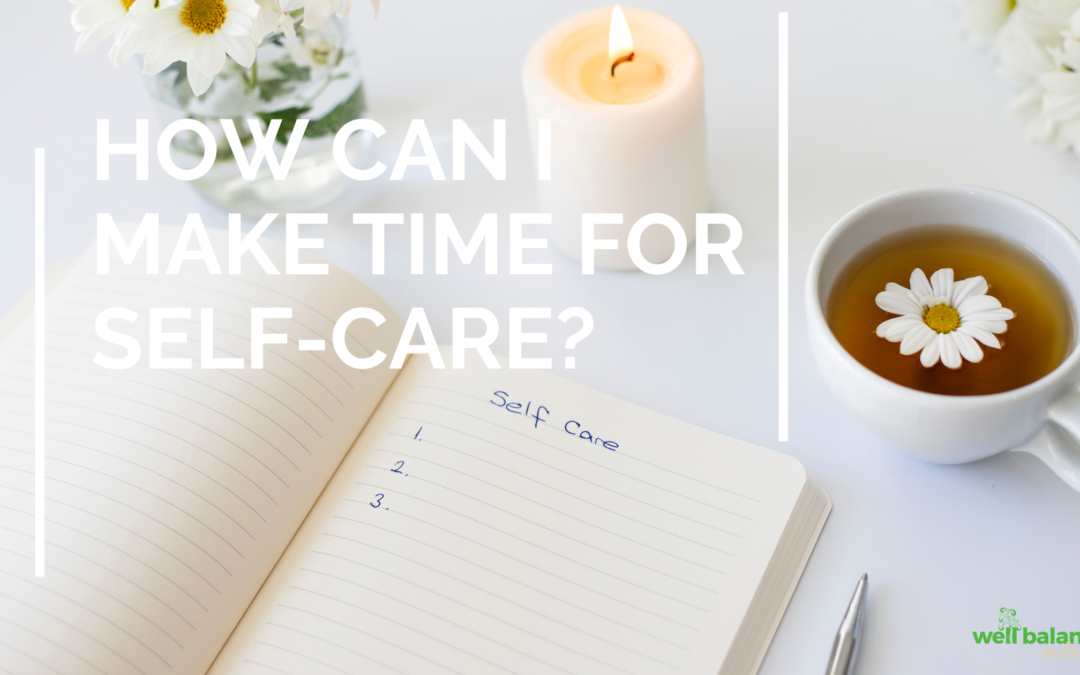
by Isabella | Feb 17, 2023 | Nutrition Questions Answered
The start of the new year is full of hopeful chatter about new health goals and routines. However, we know how hard it can be to form new habits when you are still recovering from a busy holiday season. Time is often the barrier, not a lack of desire to make good choices. Recently this was confirmed when we asked our tribe, what is the biggest wellness challenge you are facing? And the most popular answer was: finding time for self-care.
Before we dive into what self-care is and the simple ways anyone can incorporate it into their life, I want to stress what self-care is not. When people think about the term self-care they often mistake it for selfishness or self-indulgence. Wellness marketing promotes self-care in the form of fancy products or services often targeted to burned out moms, overworked individuals, and confused consumers. Businesses see our deepest pains and frustrations and use them to sell us their product as the solution. Many of these products and services have really great advertising that make us believe it could really be the answer. However, more often than not, it’s a waste of money or a band-aid covering up a deeper issue.
So, what is self-care?
I recently stumbled upon a study in BMC Palliative Care and fell in love with their definition. The article described self-care as “the self-initiated behavior that people choose to incorporate to promote good health and general well-being.” The words “self-initiated” made this stand out among any other description I’ve read. What this means is that self-care is based on what you need, and you get to decide when to practice it. Self-care looks different for everyone; for some it may be a skincare routine before bed, for others it may be a 5 minute meditation before starting the day, or eating healthy and moving their bodies regularly. All that matters is that the practice is on your terms and it’s something you do intentionally that brings you joy. When introducing self-care into your routine, remember to check in with your expectations, take some time to think about what you have the time and energy for, and know every little bit counts.
How do I make the time?
Now that we’ve covered what self-care is and is not, let’s discuss how you can make the time to incorporate it. At Well Balanced we understand there are some seasons of life where time is limited. That’s why we developed the tips below to help you sprinkle in self-care wherever and whenever possible.
Ways to add in self-care:
- Time blocking. It may feel silly at first, but setting aside time or making an appointment with yourself can help guarantee you are prioritizing your needs. Have 10 minutes between meetings? Block that time so you can spend those few moments doing something for yourself.
- Microbreaks. Taking 5-10 minutes to step away from your desk can help boost energy levels, decrease fatigue, and increase self-care. Get up and drink a glass of water, walk to the mailbox, or listen to your favorite song. Small breaks are a great way to add in self-care without having to rearrange your schedule.
- Check in with yourself. Taking a moment to ask yourself, “What do I need right now?” or “How can I support myself today?” creates the space for you to recognize and support your needs. Whatever it is, make sure you find time to incorporate it in small amounts during the day.
- Unwind after the day. Whether it’s a walk around the neighborhood, listening to a podcast on the commute home, or watching the sunset from your window, having an activity to transition into the evening is a great way to let go of the day while tending to yourself.
- Plan something to look forward to. Having something fun or relaxing planned is not only motivating, but it also allows you to set aside time to do things that bring you happiness. It can be as simple as catching up on a TV show after the kids go to bed, or it can be something more involved like a weekend getaway. Doing the things you enjoy, no matter what it looks like, is a wonderful form of self-care.
- Set and keep boundaries. Sometimes the ultimate self-care is drawing a line between what is ok and not okay. Whether that relates to how many things you are willing to put on your calendar, how much you respond to emails after hours, or how many activities your kids can be involved in. Those conversations can be difficult but worthwhile when they protect your wellbeing.
Self-care in seconds: If you are on a strict time crunch, look no further because here are some suggestions that can help you take care of yourself without having to sacrifice time.
- Deep breathing for 30-60 seconds. Take a few moments to focus only on your breath, deeply breathing in and out for as long as you need. Breathwork can help regulate blood pressure, calm the nervous system, and recenter your focus, promoting small moments of self-care.
- The 20/20/20 strategy. This tool can be a great way to add in microbreaks or moments of self-care throughout the day. Stop every 20 minutes to focus on an object 20 feet away for 20 seconds before returning to close up viewing. This will help prevent eye strain and allow you to reset in the midst of a busy day.
- Check-in with your body. Pay attention to your physical sensations, relax your shoulders, unclench your jaw, adjust your posture, and maybe stretch for a moment. Releasing the tension in your body is a simple yet effective way to care for yourself.
- The 54321 practice. Focus on 5 things you see, 4 things you can touch, 3 things you hear, 2 things you can smell, and 1 thing you can taste. This will help bring you into the present moment and tend to yourself for a few brief moments.
- Hug it out. If you have a friend, coworker, child, or loved one around then a brief embrace might be a great way to show love to yourself and another person, while receiving love in return.
Self-care does not need to be a drawn out process or costly activity. It can be done in seconds and practiced anywhere, at any time. It is accessible to everyone and essential for overall health and wellbeing. If you are interested in learning more about self-care or need more guidance on how to incorporate it into your life, we encourage you to reach out to one of our coaches. In the meantime, remember to take care of yourself the way you care for others!
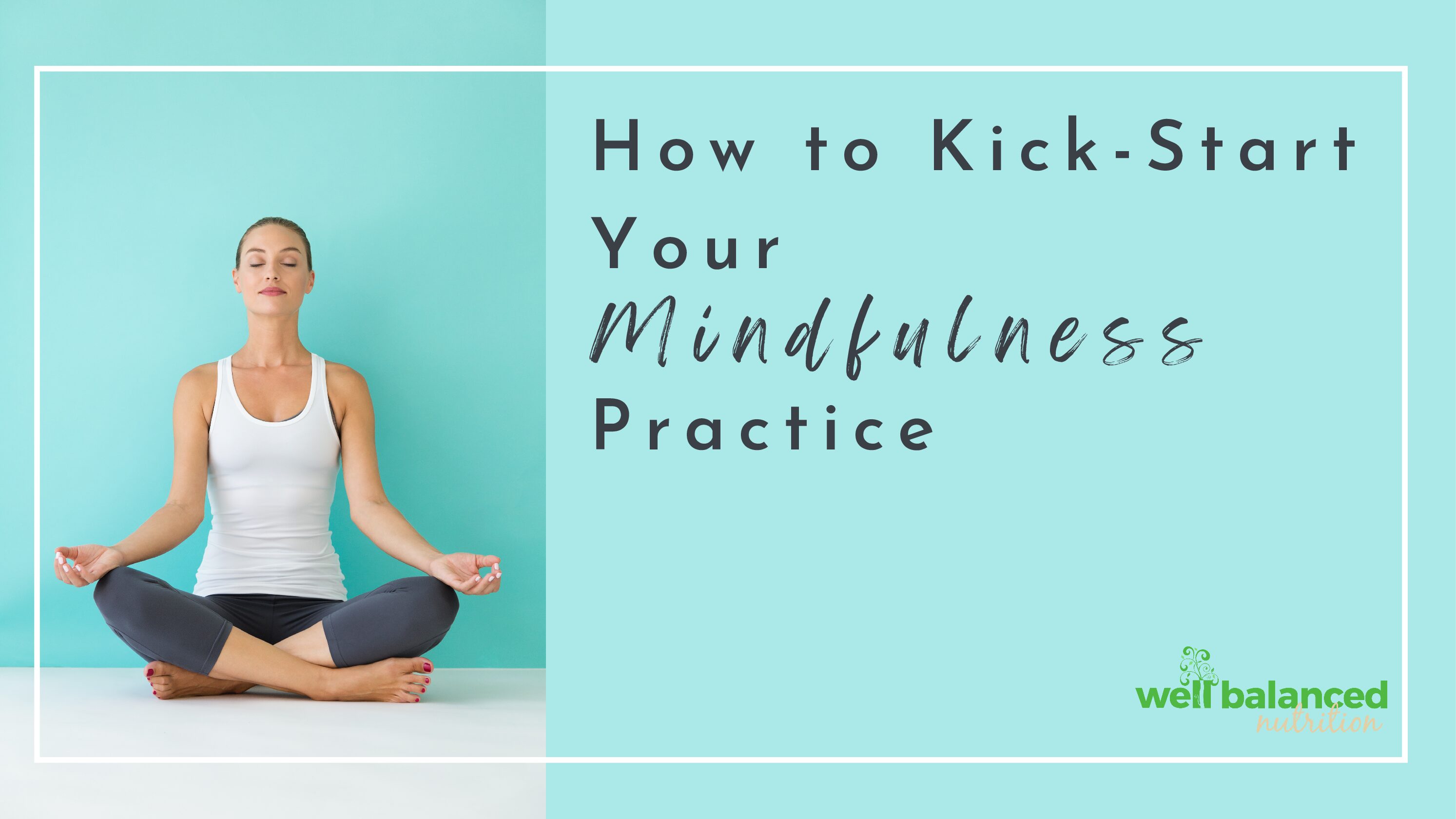
by Isabella | May 11, 2022 | Nutrition Questions Answered
In the midst of a fast paced society, there is no shortage of distractions. From the time we wake up to the moment we fall asleep, we experience the urge to check our phones, answer an email, check in with the news headlines for the day, and all the notifications and happenings in between.
With never ending to-do lists and an abundance of interruptions, it is easy to operate on autopilot, bouncing from one task to the next. But what if the key to fulfillment, productivity, and overall happiness isn’t multitasking, but rather the act of slowing down and appreciating what is happening right in front of us?
There is nothing more profound than anchoring yourself to the present moment. This idea has made the practice of mindfulness gain popularity in recent years.
What is Mindfulness?
Mindfulness is living presently in the moment and appreciating its uniqueness, knowing we will never live that moment or experience again. When we are mindful our senses are heightened, making us more aware of the way the afternoon sun feels on our skin, the sound of a summer breeze rustling the leaves of a nearby tree, or the smell of a favorite meal as it travels through the house.
Whenever we practice mindfulness, we bring a sense of awareness to what we are doing directly through our senses. However, we can also practice mindfulness by bringing attention to our state of mind via our thoughts, feelings, and perceptions. As Jon Kabat Zinn, founder of Mindfulness-Based Stress Reduction, said “Mindfulness is awareness that arises through paying attention, on purpose, in the present moment, non-judgmentally.” And when we do so, we may be restructuring our brains through training this sense of greater awareness.
The Basics of Developing a Mindfulness Routine
Mindfulness is a personal practice and can be utilized at any moment. It offers a buffer between external experiences and internal reactions. The best part is that mindfulness is free of cost and you can begin practicing wherever, whenever. Here is how:
- Set aside time (everyday). Choose a time and place where you feel comfortable and won’t be interrupted. Try and do this as consistently as possible, because the more you practice the stronger the mindfulness muscle will become. The good news is that you can do this multiple times a day as a comfortability is created.
- Become an observer. The purpose of being mindful is to observe what is happening in that exact moment, without trying to judge or change anything. The goal is not to achieve nirvana, but to be more aware of what is happening via your senses or thoughts/feelings depending on the scenario.
- Remember your thoughts are like clouds. An easy way to avoid distracting ourselves with our own judgments and perceptions, is to think of them as clouds in the sky. We cannot stop a cloud from passing through, but we can instead just watch without engaging with it.
- Return to the observer mindset. When the mind starts taking over and you catch yourself thinking about what’s for dinner or the project that isn’t going well, remember to return to the observer’s mind. Instead of thinking too much about anything, observe what is happening, what you can feel/see/hear/smell/taste, and what emotions arise.
- Give yourself grace. Remember to be free of judgment and criticism, especially when it comes to yourself. A wandering mind is to be expected, so instead of beating yourself up, gently guide yourself to the present and begin again.
- Practice in different ways. The more familiar you become with mindfulness, the more you can diversify when and where you practice. It is best to start small and simple, perhaps while sitting outside in a quiet place or somewhere you are alone and at ease. But as this muscle grows, try and do it in a new location or setting. The more mindful we can be in different situations and places, the more present we become in our daily lives.
More on Mindfulness
Mindfulness is not a destination, but a journey. Just like strengthening any skill, practice and consistency are important. But, there is nothing more profound than anchoring yourself to the present moment.
Although it is a simple exercise, our thoughts and judgments can sometimes make it feel complicated or difficult. Luckily, there are many experts and resources out there to help. Below is a list of Coach Bella’s favorite mindfulness tools:
- If you like the sciency side of things, check out episode #533 of the Rich Roll Podcast where he talks to neuroscientist Dr. Huberman on how to change your brain (It can also be found on Spotify, Apple, and other podcast streaming platforms).
- If you want to know more about mindfulness, check out this article which dives much deeper into its history, meaning, practices, and much more.
- If you want to learn more about unlocking your mind and healing through the power of thought, listen to episode #243 of ON Purpose with Jay Shetty to hear some wonderful insight from Dr. Joe Dispenza (It can also be found on Spotify, Apple, and other podcast streaming platforms).
- If you want to incorporate mindfulness into your eating, read one of our previous blogs on mindful eating.
- If you want to add a mindfulness meditation into your routine, try out the Headspace app or free mindfulness meditations from Mindful.org.
- If you want to learn more about mindfulness and nutrition, join us May 18 for our monthly webinar.
And as always, remember to enjoy the journey!
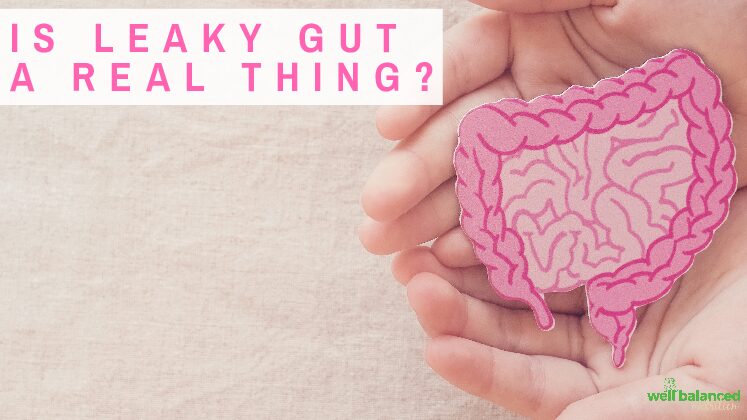
by Isabella | Apr 3, 2022 | Nutrition Questions Answered
Harvard Health calls it a “medical mystery” and “mysterious ailment.” It’s been linked to everything from gut troubles, autoimmune diseases, and even mental health concerns.
I’m talking about “leaky gut” or “intestinal permeability”—have you heard of it?
Many doctors and the established medical community may not recognize it, but there is growing research to suggest it is associated with many health conditions.
What exactly is “leaky gut?” Do you have it? How does it happen? What can you do about it? Hold on to your seats, because this leaky gut train is about to leave the station!
What is “leaky gut?”
Your gut (gastrointestinal system) is not just a 30-foot-long muscular tube that starts at your mouth and ends with you using the restroom. It’s a vast and complex system with many functions. It breaks down food into smaller digestible bits, keeps it moving through the gastrointestinal tract, and skillfully absorbs water and nutrients while keeping out harmful substances. More and more research has revealed that these essential gut functions are interconnected throughout your body—to everything from your heart to your brain. This means that the foods and drinks you consume can directly affect your health and mood. So maybe it isn’t you after all, maybe it’s your gut.
Your gastrointestinal tract is lined with millions of cells, all side-by-side in a single layer so thin it’s less than the width of a human hair. Those intestinal cells help the body to absorb what we need from foods and drinks while acting as a gatekeeper, allowing in what your body uses and keeping out what it doesn’t, which ultimately ends up as waste. This ability to selectively allow some things in our gut to be absorbed while keeping others out is only possible if the cells are working properly and physically joined together very tightly. The bonds that keep the cells tightly together are called “tight junctions.”
Leaky gut happens when the tight junctions aren’t so tight anymore. The cellular barrier is inflamed, irritated or otherwise weakened, allowing tiny holes to appear. These tiny holes or gaps allow things that would normally stay out of the bloodstream into the bloodstream causing a number of issues. When things like food particles, waste products, and bacteria get into the bloodstream your immune system is altered and triggered, responding by attacking the foreign bodies similar to how your immune system would fight the cold virus and cause inflammation.
Do you have a leaky gut?
The symptoms of leaky gut are similar to those of other digestive conditions like inflammatory bowel disease, celiac disease, and Crohn’s disease. Symptoms can include diarrhea, constipation, cramps, bloating, food sensitivities, or nutrient deficiencies.
But, because the food particles, toxins, and bacteria have been absorbed into the bloodstream which travels throughout your body, symptoms can appear anywhere. Studies show that leaky gut may feel like fatigue, headaches, confusion, difficulty concentrating, joint pain, or skin problems (e.g., acne, rashes, eczema). Leaky gut is also linked with diabetes, polycystic ovarian syndrome, liver disease, chronic fatigue syndrome, and autoimmune diseases such as lupus and multiple sclerosis. There may even be links to anxiety and depression.
Many of these gut and non-gut symptoms and conditions are linked to chronic inflammation, but more research is needed to understand how they are connected.
Even if you have some of these symptoms, the fact is, it’s very difficult to diagnose a leaky gut, or how leaky it is. However, many functional and integrative doctors are using the Cyrex Array 2 testing to help determine gut permeability. This means science is heading in the direction of developing tests to diagnose leaky gut. But, in some instances it is difficult to say whether your symptoms are from leaky gut, or whether leaky gut is a symptom of another issue.
What causes leaky gut?
It’s not 100 percent clear what causes those bonds to loosen and result in tiny perforations in the gut barrier. In fact, we’re just starting to understand how the gut barrier functions and there is a lot of ongoing research.
Part of leaky gut may be due to the genes you inherit from your parents. It can also be from medications or gut infections. Leaky gut is also linked to eating a diet that is low in gut-friendly fiber (adults should aim for 25-30 g of fiber per day). It can also be from consuming too much added sugar and saturated fat. Leaky gut may even result from stress or an imbalance in the diversity and numbers of your friendly gut microbes. As you age your cells can get damaged more easily and heal slowly, including the cells that line your gut. This can leave you more susceptible to loosening of the gut barrier.
The bottom line
More and more research suggests that your gut is deeply interconnected throughout your body—from the brain, to your heart, to your immune system, and even to your mood. This means that the foods and drinks you consume can directly affect your health and mood. The gut’s ability to selectively allow the foods we consume to be absorbed while keeping others out is only possible if the cells are working properly and physically joined together very tightly, via tight junctions. When the cellular barrier lining your gut is inflamed, irritated or otherwise weakened, the tight junctions loosen, allowing tiny gaps for unwanted entities to enter your bloodstream and thus cause leaky gut. This then translates into a slew of symptoms and conditions. However, leaky gut is preventable and treatable. That’s why next week, we’ll discuss strategies for reducing gut inflammation, ways you can keep those tight junctions tight, and how to mitigate the onset of leaky gut (hint: it has a lot to do with nutrition).

